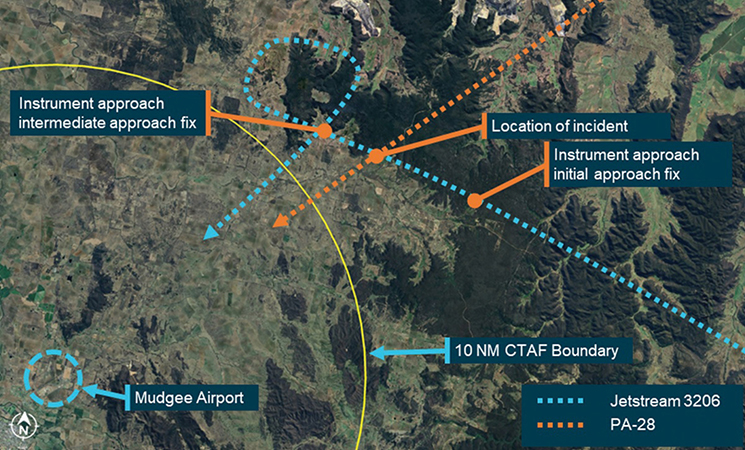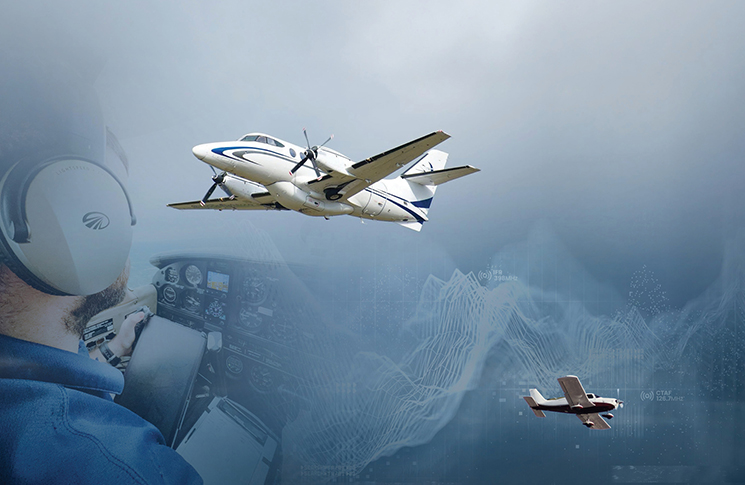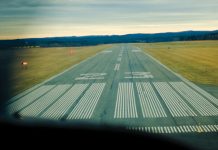Reading this story may be the first time you hear of a near miss between a small airliner and a Piper Cherokee at Mudgee late last year.
One reason is that, by definition, the incident involved no fatalities, injuries or damage and, hence, no publicity.
Only by luck was this incident not a tragedy – and lucky streaks don’t last forever. We in aviation should view it as a gift – a fatality-free motivator for us all to do better. The Mudgee incident should be discussed to see what the aviation industry can learn from it – what can the sector do to reduce such potentially fatal occurrences?
High-performance turbine and jet aircraft operate into non-towered aerodromes every day, mixing with smaller aircraft being used for commercial, training or private flights. These operations are conducted safely due to standard procedures and the professionalism of the pilots involved. Sometimes, however, a good deal of luck is involved as well.
How it nearly happened
One reason to review the Mudgee incident is to ask, what can we as pilots learn from it? For instance, how can we learn to be more vigilant?
If you’re flying a light aircraft into a non-controlled airport, what are the chances of encountering a high-performance aircraft? And how much more danger is there if both aircraft are heading for the same instrument approach waypoint? If both aircraft are IFR, they would be provided with traffic information on other known IFR aircraft and be expected to arrange separation in Class G airspace, using the appropriate Area frequency or CTAF.
The situation that unfolded at Mudgee Airport evolved when a British Aerospace Jetstream was conducting a practice instrument approach. It was a training flight, travelling from Newcastle and carrying 2 pilots and an additional trainee captain, rather than a commercial flight carrying up to 19 passengers.
At top of descent, ATC told the crew that another aircraft was inbound for the same approach.
At about 30 nm east of the airport, the crew of the Jetstream made an initial broadcast on the CTAF advising their position and intentions. Further position broadcasts were made on the CTAF during descent, in addition to talking to the crew of the other aircraft on the approach to arrange sequencing.
However, during the initial segment of the approach, about 13 nm north-east of the airport, the Jetstream crew saw a third, unidentified aircraft flying very close. The ATSB Occurrence brief about this near miss states the other aircraft, a Piper Cherokee, crossed below the Jetstream from the right, tracking towards the airport.
It also states the Jetstream crew had estimated the separation between the aircraft was less than 100 metres horizontally and 200 feet vertically.
As the crew tried to contact the Cherokee, ATC was also detecting the third aircraft on their system.

A diagram released with the report suggests the near miss occurred when the Jetstream was going from the Echo Charlie waypoint to Echo India on the Mudgee runway 22 RNP approach.
About 5 minutes after the incident, the crews of the 2 aircraft involved in the incident established communication. The Jetstream crew later reported the Cherokee had not been detected by the ADS-B function of their navigation system.
The separation between the aircraft was less than 100 metres horizontally and 200 feet vertically.
The Cherokee, carrying an instructor and a student pilot, was conducting a training flight from Scone to Mudgee. The aircraft had an altitude-reporting transponder and a single radio that was tuned to the CTAF at around 10 nm from the airport.
The report notes the Cherokee crew made an inbound call on the CTAF but received no response. Approximately 2 minutes later, they were contacted by the crew of the Jetstream advising them of the incident.
Vigilance beyond boundaries
The ATSB, Airservices Australia and CASA are making a joint effort to reduce the risk of proximity incidents occurring at non-controlled aerodromes as the majority of aerodromes in Australia operate without air traffic control services.
The ATSB report emphasises the operation at non-controlled aerodromes relies on pilots broadcasting their position and intentions on the CTAF and agreeing on separation procedures and following standard procedures. It says that listening to and broadcasting on the CTAF is mandatory within 10 nm of certified aerodromes such as Mudgee Airport.
But, to state the obvious, the 10 nm radius is not a frontier – it does not contain the risk of collision. This is particularly so in the case of a VFR aircraft approaching a CTAF and the crew being unaware they are in the vicinity of an RNP approach.
The ATSB report goes on to say the hazards associated with operations approaching the 10 nm boundary of non-controlled aerodromes can be mitigated by maintaining good situational awareness and being alert to the likely traffic mix.
It says that when conducting practice instrument approaches in visual conditions, flight crew should always maintain a vigilant lookout for other traffic as instrument approach procedures often begin more than 10 nm from the aerodrome where other aircraft may be operating while not monitoring the CTAF. Ensuring a radio broadcast is made on the Area frequency, as well as the CTAF, will assist in alerting other aircraft in the vicinity.
It is also important to understand the limitations of onboard traffic systems in detecting aircraft with minimal equipment, and the limitations of radar coverage in enabling air traffic control to see and advise of traffic when operating in remote areas, it says.
Pilots of light aircraft should consider the possibility of encountering higher performance air transport aircraft when approaching a non-controlled aerodrome. When equipped with more than one radio, monitoring the CTAF well before the 10 nm boundary will give you more time to receive broadcasts and build awareness of traffic at the aerodrome.
The ATSB strongly encourages the fitting and use of equipment such as ADS-B transmitting devices to assist other aircraft and ATC in identifying and tracking your aircraft.
The incident discussed is not unique, unfortunately, as the ATSB database shows.
ADS-B rebate
The Federal Government is offering a 50% rebate, up to $5,000 per eligible aircraft, for the installation of ADS-B equipment. The rebate is currently available for registered owners of aircraft operating under both VFR and IFR.
Full details at business.gov.au





